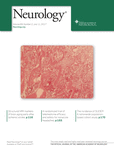 A patient’s “unusual” brain cyst excited several researchers in China so much they published a paper about it in a major journal. Soon a reader identified a glaring mistake: the authors had described the cause of the cyst incorrectly.
A patient’s “unusual” brain cyst excited several researchers in China so much they published a paper about it in a major journal. Soon a reader identified a glaring mistake: the authors had described the cause of the cyst incorrectly.
A month after the paper appeared online in November 2016, the reader — a neurologist — published a letter in the journal, pointing out the incorrect diagnosis. In their response, the authors acknowledged the mistake but said it had occurred not because they had misdiagnosed the patient, but because the diagnosis had been mistranslated from Chinese to English.
The editors of Neurology retracted the paper because of the error and published a new version with the correct diagnosis on the same day, June 6.
Although we did not hear back from the paper’s two corresponding authors—Jun Guo and Guan Sun—the journal published a string of letters that chronicles the case.
Here’s the retraction (and replacement) notice:
The Neurology® editors and the authors of the article “Teaching NeuroImages: Giant neurocysticercosis with unusual imaging manifestations,” published online in conjunction with the November 22, 2016, issue of Neurology, agree to the retraction of the article. Retraction follows publication of a WriteClick® Editor’s Choice correspondence exchange in which a pervasive translation error was identified. The diagnosis should have been “cystic echinococcosis,” not “cysticercus.” The article has been corrected and republished.
“Teaching NeuroImages: Giant neurocysticercosis with unusual imaging manifestations,” first published online in November 2016, was retracted on June 6. The corrected version was republished online the same day, June 6. Corrections to the supplemental data and teaching slides were also published.
According to the paper, the patient — a child — recovered:
After scanning the patient’s brain, the doctors discovered why a 6–year-old child was suffering from vision problems. She had a cyst in her brain, caused by a tapeworm. The surgeons removed the cyst, treated the infection, and the patient recovered.
The error was flagged by Oscar H. Del Brutto, from the Universidad Espiritu Santo in Ecuador, who published a letter in Neurology in December 2016 titled “Not a giant cysticercus”:
The Teaching NeuroImage by Nie et al. is not of a cysticercus as mentioned by the authors. [1] Instead, it is a clear example of cystic hydatid disease, caused by infection with Echinococcus spp. A single, huge, and unilocular non-enhancing parenchymal brain cyst with well-defined borders and not surrounded by edema is fairly characteristic of this parasitic disease. [2] In addition, scolices are clearly shown in surgical and histopathologic photographs. Proper interpretation of currently available sets of diagnostic criteria for neurocysticercosis is advised to avoid these diagnostic pitfalls. [3,4]
Guo, based at the Affiliated Hospital of Nantong University in China, responded to Del Brutto’s letter on March 1, 2017:
We thank Dr. Del Brutto for the interest in and comments on our NeuroImage. We made a translation error, as identified by Dr. Del Brutto. A typical example of parasitic disease is a single, large, low lesion without peripheral edema or enhancement. The postoperative pathologic examination showed parasite scolices in left temporal and occipital lobes; the final diagnosis was hydatid disease in Chinese. Accurate translation of hydatid disease is cystic echinococcosis, not cysticercus, in the English–Chinese dictionary; specifically, cystic echinococcosis caused by infection with Echinococcus spp.
Neurology also published an Editors’ Note on June 6, explaining the error and pointing readers to the retraction and the corrected article.
Executive Editor Patricia Baskin told us the journal still would have accepted the paper even if it had listed the correct diagnosis:
We read the author’s answer to mean he had not used the dictionary when making the diagnosis and understood there was an error in translation when the error was pointed out and they checked the Chinese-to-English dictionary.
Retract and replace has become an increasingly popular strategy for certain publishers— in particular, JAMA and The Lancet— who typically use this option to correct honest but serious errors.
The retraction and replacement in the Neurology is the second for the journal. In February 2017, Neurology issued a partial retraction of a paper published online in March 2016, after the Office of Research Integrity determined that an author, Andrew R. Cullinane, had committed research misconduct and manipulated a figure in the paper. After the editors of Neurology investigated and confirmed the manipulation, they removed the figure and the author’s name from the paper, and published the corrected paper this past February.
Like Retraction Watch? Consider making a tax-deductible contribution to support our growth. You can also follow us on Twitter, like us on Facebook, add us to your RSS reader, sign up on our homepage for an email every time there’s a new post, or subscribe to our new daily digest. Click here to review our Comments Policy. For a sneak peek at what we’re working on, click here.
The authors’ explanation seems a bit disingenuous… since they also changed the entire reference list, from papers on cysticercosis to papers on echinococcosis…